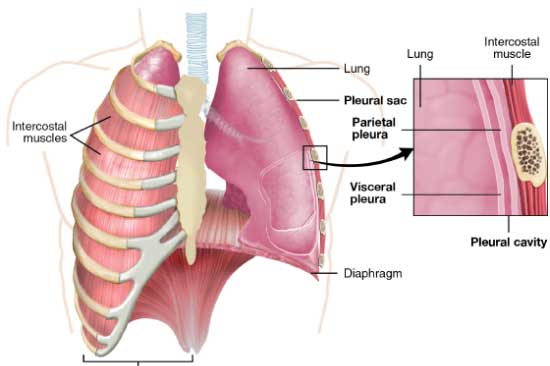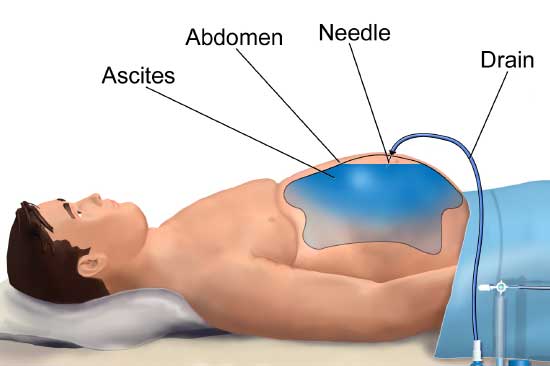Mesothelioma Treatments
There are now many treatments available to mesothelioma patients.
Although it is often very difficult to treat and is regarded as a terminal condition, research into the treatment of mesothelioma has come on leaps and bounds in recent years, and more and more people are living for years rather than months following a diagnosis.
While treatment will vary and depend on a variety of factors, there are a number of options open to patients. These included chemotherapy, radiotherapy, surgery and immunotherapy.
Types of Mesothelioma Treatment
Not everyone who is diagnosed with mesothelioma chooses to have treatment. However, there are a range of options available and each patient will be assessed on a case-by-case basis by their treating medical team.
Chemotherapy
A common mesothelioma treatment is chemotherapy. This uses cytotoxic (anti-cancer) drugs to kill cancer cells.
Chemotherapy may be used before surgery to shrink tumors, making them easier to remove, or after surgery to prevent the cancer returning.
How Chemotherapy Is Administered?
Chemotherapy tends to be a weekly treatment but can be given every two to three weeks, depending on the type of chemotherapy drugs used.
Before you have chemotherapy, you will have to have blood tests to ensure you can safely start treatment. These may be done a few days before the treatment or on the day of your treatment.
Chemotherapy is administered by a drip in the arm. A cannula, or small tube, is inserted into a vein in the arm and the drip is connected. Some patients may need a central line, a long plastic tube that allows the drugs to be administered into a large vein, either in the chest or arm. If you have a central line, it will stay in throughout your treatment.

Possible Side Effects
Chemotherapy can cause a number of side effects. These will vary from patient to patient as they depend on what chemotherapy drugs you have, the amount you have, and your body’s reaction to them.
Common side effects are:
- Nausea (feeling sick)
- Loss of appetite
- Weight loss
- Fatigue (feeling very tired)
- Bruising or bleeding easily
- Diarrhoea or constipation
- Hair loss
Radiotherapy
The aim of radiotherapy treatment for mesothelioma is to control the symptoms and slow the growth of the cancer.
The treatment uses radiation, usually in the form of x-rays. The treatment you receive will depend on the stage of your cancer.
How Radiotherapy Is Administered
The number of radiotherapy sessions you have will depend on the stage and size of your mesothelioma, as well as the reason for the treatment, and so will differ from patient to patient.

Stage 1 Cancer
If your mesothelioma has not progressed too far (stage 1), you may have surgery to remove the tumour or tumours, and radiotherapy can be used following this to prevent or delay the cancer from returning. Radiotherapy is also often used at the site of biopsies or chest drains to prevent the spread of mesothelioma.
Stage 2, 3 or 4 Cancer
If your mesothelioma is more advanced (2, 3 or 4), radiotherapy may be used to slow the progression of the disease.
Before Radiotherapy Treatment
Before you start radiotherapy, you will have a CT scan to pinpoint the exact location of the cancer.
This ensures the highest dose of radiation is delivered to the cancer, avoiding healthy cells as much as possible.
After the scan, you will have small, permanent marks put on your skin; this is necessary to be certain that the same area is targeted at each treatment session.
Types of Radiotherapy
Patients usually receive radiotherapy treatments five times a week, i.e. one treatment a day, Monday to Friday. The most common type of radiotherapy is external radiotherapy. This is where a radiotherapy machine directs beams of radiation at the cancer.
The other type is internal radiotherapy, where a radioactive implant is put inside the body, near the cancer, or a radioactive liquid is injected or swallowed. Generally, external radiotherapy is given for pleural mesothelioma treatment.
The treatment is done at a hospital in a radiotherapy room using a radiotherapy machine. This is a large machine that will usually move around you during your treatment. At no point during the treatment should the machine touch you.
What to Expect At Your Sessions
Before you have your first radiotherapy session, your radiographer will talk you through the whole process. Many hospitals have docks for personal music players so you may be able to listen to your own playlist of music during your treatment, which may help you relax.
You will lie down on a table, and the radiographers will go into an adjacent room. They will be able to see and hear you throughout your treatment and will talk to you through an intercom system.
You will need to lie as still as you can while the treatment is being administered, but it should only take a few minutes and should be painless.
Possible Side Effects
Side effects vary from patient to patient, some people will not get any, and some might suffer from every single one.
Possible side effects include:
- Sore skin, similar to sunburn
- Tiredness
- Hair loss in the area targeted by the treatment
- Nausea
- Discomfort when swallowing
After The Treatment
Once the treatment session has finished, you should be able to go home straight away.
External radiotherapy does not make you radioactive, so you can safely be with other people after your treatment, including pregnant women and children.
Immunotherapy
Immunotherapy is a relatively new treatment for mesothelioma. It is a biological therapy which harnesses a patient’s immune system to help fight the disease.
Immunotherapy is now in some cases available on the NHS.
Where this is not offered, patients can get this treatment privately, and we often claim the costs of private immunotherapy treatment as part of a mesothelioma compensation claim.
There are a number of different immunotherapy treatments that can be used for mesothelioma including Pembrolizumab (Keytruda) and Nivolumab (Opdivo).

Benefits of Immunotherapy
There are some benefits to this treatment over chemotherapy, mainly that there are fewer side effects, as the treatment takes a targeted approach, attacking the cancer cells and leaving the healthy cells alone.
More information on immunotherapy is available on our site. The number of radiotherapy sessions you have will depend on the stage and size of your mesothelioma, as well as the reason for the treatment, and so will differ from patient to patient.
Surgery For Pleural Mesothelioma
Surgery for pleural mesothelioma can be radical. The surgery aims to remove the mesothelioma completely, and often surgery is done alongside chemotherapy or radiotherapy for the best results.
There are two types of surgery used for pleural mesothelioma:
Pleurectomy
In this operation, part or all of the pleura, the lining of the lung, is removed. This can help with chest pain, fluid build-up (pleural effusion) and breathlessness.
The operation can be done through keyhole surgery. Three small wounds are made in the chest, and as much of the pleura is taken away as possible. If keyhole surgery is not an option, a large cut will be made in the chest. With both methods, a substance is put into the space made by removing the pleura to prevent further fluid build-up.
If the whole pleura is being removed (total pleurectomy), a large cut is made in the chest, and the pleura is removed and replaced with a specialized mesh layer.
A pleurectomy is a major operation, with most patients staying in hospital for a week after their operation. It then takes between four and six weeks to recover.
If you have a total pleurectomy, you will stay in hospital for between 10 and 15 days, and recovery generally takes between six and eight weeks.
Extrapleural Pneumonectomy
This is usually only a surgical option where mesothelioma has been diagnosed at an early stage, where it has not spread to the lymph nodes or beyond the lungs. It is a major operation which involves the removal of the lung and pleura.
As it is such a major operation, there are risks, and between 5% and 10% of patients who have this surgery will sadly die during or shortly after the surgery.
The surgery is similar to that for the pleurectomy, in that a large incision is made in the side of the chest. However, in an extrapleural pneumonectomy, the affected lung is removed, along with the pleura, the diaphragm and the pericardium (lining of the heart).
Following this surgery, patients will need to stay in hospital for at least two weeks, and recovery generally takes around three to four months.
Surgery For Peritoneal
Mesothelioma Peritonectomy
This type of surgery removes the peritoneum (lining of the abdomen). Often, cytoreductive surgery is used; this is also known as debulking. The peritoneum is removed, and in most cases, chemotherapy is given straight into the abdominal cavity during the operation.
This type of surgery is a major procedure, and so the patient needs to be fit and diagnosed at an early stage to be considered suitable for this treatment.

Palliative CareTreatment
For some people, the treatments discussed above are not an option. They may have been diagnosed with mesothelioma at a late stage and are not considered a suitable candidate for these treatments, or they may have decided that the benefits of the treatments do not outweigh the side effects.
There are palliative treatments that can be offered in the alternative. Although this term tends to be associated with end of life treatment, palliative mesothelioma treatments can be used at any stage.
Thoracentesis
A common symptom of pleural mesothelioma is a build-up of fluid in the space between the lungs and their lining. A thoracentesis procedure uses a needle to drain this fluid.
This can help to relieve a patient’s symptoms of breathlessness.

Pleurodesis
For patients who suffer from recurring fluid build-up, a pleurodesis may be considered. This is a procedure where talc, or some other irritant, is put in the space between the lungs and the lining of the lung so that the tissue becomes inflamed and sticks together.
The lining of the lung sticks to the lung itself, so there is no space for the fluid to build up. This can be a painful and uncomfortable procedure but, once recovered, the patient should see an improvement in their symptoms. Unfortunately, the procedure is not always successful.

Paracentesis
As with the thoracentesis and paracentesis, a pericardiocentesis drains fluid from around the heart.
These are just some of the treatments that you may be offered. Your treating medical team will go through all of your options with you.

Pericardiocentesis
As with the thoracentesis and paracentesis, a pericardiocentesis drains fluid from around the heart.
These are just some of the treatments that you may be offered. Your treating medical team will go through all of your options with you.


